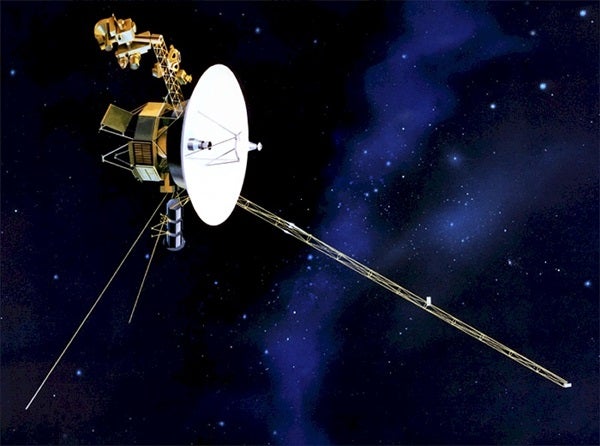In 1977, Voyager 1 launched from Cape Canaveral, Florida, on a mission to study the solar system’s gas giants. Following successful observations of Jupiter and Saturn in 1979 and 1980, the spacecraft continued toward the outer reaches of the solar system. Now more than 8.7 billion miles (14 billion kilometers) away from the Sun, Voyager 1 has hit the solar system’s last stop.
In December 2004, Voyager 1’s dual magnetometers observed a sudden surge in the magnetic field strength and a decrease in the solar wind’s speed. The high readings have remained steady since December, indicating the spacecraft has reached the termination shock.
Between August 1, 2002, and February 5, 2003, mission scientists detected curious readings from Voyager’s instruments. The data showed Voyager 1 had entered a section of the solar system unlike any encountered previously, and scientists debated if Voyager reached the shock. Predictions that Voyager 1 reached termination shock at this point were premature. Changes in the solar wind make the termination shock contract and expand, so pinpointing its position is difficult.
Engineers expect Voyager 1 and its sister spacecraft Voyager 2 will continue to communicate with Earth until 2020.











